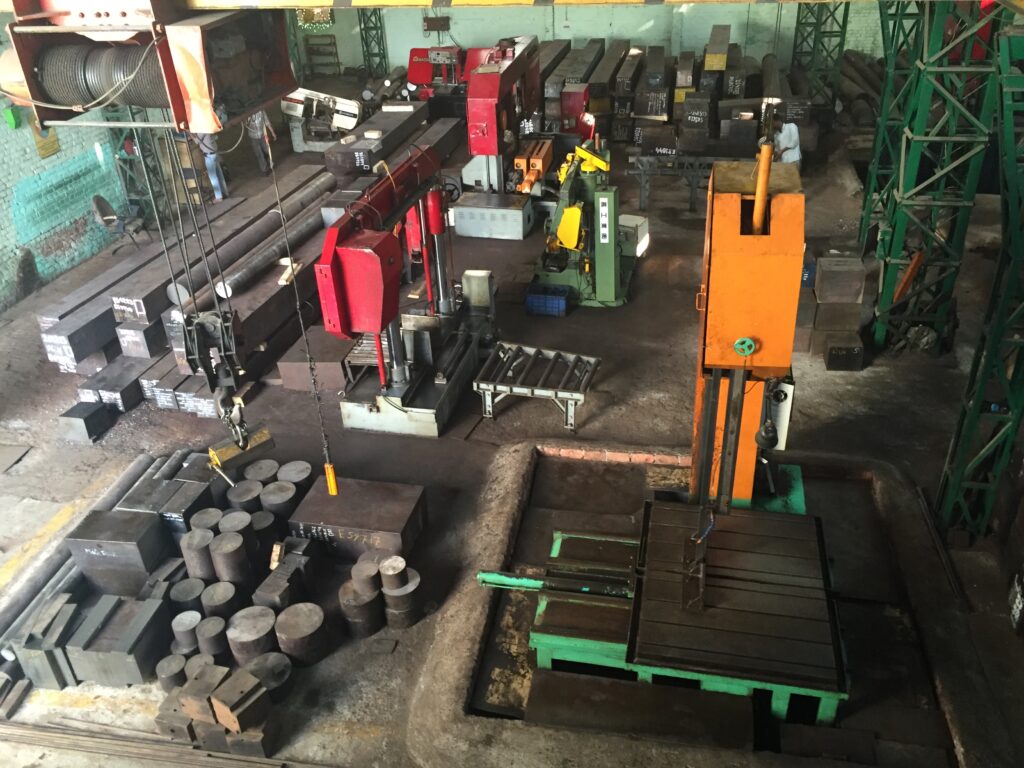HSS
now browsing by tag
High-Speed Steel vs High Carbon Steel
Steel is a cornerstone of modern industries, from construction to manufacturing. Two of the most widely used types of steel are high-speed steel (HSS) and high-carbon steel. But which one suits your needs better? This article dives deep into their properties, applications, and advantages to help you make an informed decision.

Understanding High-Speed Steel (HSS)
Composition of High-Speed Steel- High-speed steel is a specialized alloy known for its ability to withstand high temperatures and maintain its hardness. The key components include:
- Carbon: Provides hardness and strength.
- Tungsten or Molybdenum: Enhances heat resistance.
- Chromium and Vanadium: Improve wear resistance and toughness.
This unique combination allows HSS to perform exceptionally well in demanding conditions, especially in machining and cutting applications.
Properties of High-Speed Steel- High-speed steel stands out due to its remarkable properties:
- Heat Resistance: Withstands temperatures up to 600°C without losing hardness.
- Durability: Resistant to wear and tear, making it ideal for heavy-duty applications.
- High Hardness Levels: Maintains a sharp edge even after prolonged use.
These properties make HSS a go-to material for high-performance tools and components.
Applications of High-Speed Steel- High-speed steel is indispensable in industries requiring precision and durability. Its common applications include:
- Cutting Tools: Drills, milling cutters, and taps.
- Machinery Components: Gears and other machine parts exposed to high stress.
- Industrial Manufacturing: Ideal for machining operations that require sustained performance under extreme conditions.
Exploring High Carbon Steel
Composition of High Carbon Steel– High-carbon steel contains a significant amount of carbon, usually between 0.6% and 1.4%. This high carbon content gives it:
- Enhanced Hardness: Perfect for applications requiring extreme strength.
- Reduced Malleability: Results in increased brittleness.
Properties of High Carbon Steel– High-carbon steel is prized for its unique attributes:
- Strength and Toughness: Ideal for tools that endure significant mechanical stress.
- Wear Resistance: Lasts longer in abrasive environments.
- Brittleness: While strong, it is prone to cracking under impact if not treated carefully.
Applications of High Carbon Steel– High-carbon steel finds use in areas where strength and sharpness are critical:
- Blades and Cutting Edges: Knives, swords, and industrial cutting tools.
- Springs: Automotive and industrial springs.
- Structural Components: Ideal for load-bearing parts in construction and manufacturing.
Key Differences Between High-Speed Steel and High Carbon Steel
Mechanical Properties
- HSS: Superior hardness and heat resistance make it perfect for high-speed operations.
- High Carbon Steel: Higher tensile strength but limited heat tolerance compared to HSS.
Thermal Properties
- HSS: Can withstand higher temperatures without losing performance.
- High Carbon Steel: Loses effectiveness when exposed to extreme heat for prolonged periods.
Cost and Availability
- HSS: More expensive due to its complex alloying process and superior properties.
- High Carbon Steel: More affordable and widely available, but with limited applications in high-temperature environments.
Advantages and Disadvantages
Pros and Cons of High-Speed Steel
Pros:
- Exceptional heat resistance
- High durability and wear resistance
- Ideal for precision tools
Cons:
- Higher cost
- Challenging to machine or shape
Pros and Cons of High Carbon Steel
Pros:
- Affordable and readily available
- High strength and sharpness
- Excellent for low-heat applications
Cons:
- Brittle and prone to cracking
- Limited heat resistance
Choosing the Right Steel for Your Application
Key Factors to Consider
When selecting between HSS and high-carbon steel, consider:
- Application Requirements: Tools or components exposed to high temperatures? Opt for HSS.
- Budget: High-carbon steel offers a cost-effective solution for less demanding applications.
- Durability Needs: For longer-lasting performance, HSS is a better choice.
Industry Insights
Experts at Virat Special Steels recommend HSS for industries like machining and high-carbon steel for tools requiring sharp edges. HIGH SPEED STEELS (DIN 3243 , 3343 / AISI M2 , M35), HOT WORK STEELS (DIN 2343, 2344 / AISI H11, H13)
Innovations in Steel Technology
Steel technology is constantly evolving. Virat Special Steels stays at the forefront by investing in research and development to deliver cutting-edge solutions for both high-speed and high-carbon steel.
Conclusion:
Choosing between high-speed steel and high-carbon steel depends on your specific requirements. High-speed steel is unbeatable in high-temperature and high-performance applications, while high-carbon steel is a cost-effective choice for simpler tasks. For top-quality steel products, trust Virat Special Steels, where innovation meets reliability.
FAQs
- What is the main difference between high-speed steel and high-carbon steel?
High-speed steel excels in heat resistance and durability, while high-carbon steel offers superior strength and sharpness for low-heat applications. - Which steel is better for cutting tools?
High-speed steel is ideal for cutting tools due to its ability to maintain hardness at high temperatures. - How does the cost of high-speed steel compare to high-carbon steel?
High-speed steel is more expensive due to its advanced properties, while high-carbon steel is more budget-friendly. - Can high-carbon steel be heat-treated for better performance?
Yes, heat treatment can enhance the strength and durability of high-carbon steel. - Why should I choose Virat Special Steels for my steel needs?
Virat Special Steels offers premium-quality products, expert guidance, and innovative solutions tailored to your requirements.






